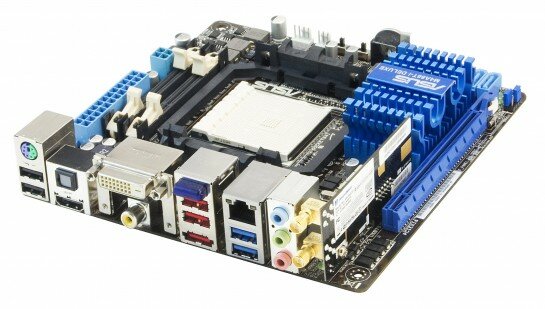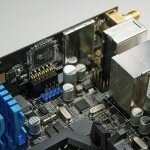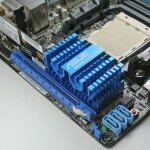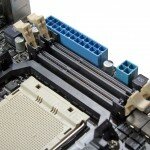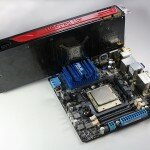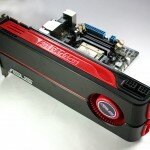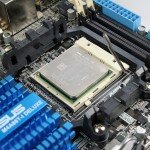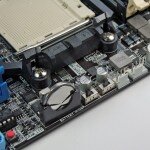We’ve covered mini-ITX boards here on Tech in Style before: the AT3IONT-I Deluxe is a motherboard designed specifically for a home theatre: not only because of the Ion chipset underneath the large, passively cooled heatsink, but also the specific component choices ASUS made alongside it: audio and connectivity etc.
While that was perfect for its application, the Intel Atom CPU leaves it a little underpowered for more a universal application, hence, this is where ASUS’ latest mini-ITX: the M4A88T-I Deluxe, shines.
We saw it first at Computex this year, but I’ve now finally got one to play with and I love it even more than the AT3IONT-I Deluxe, simply because it has so much more potential.
The board is built using AMD’s latest 880G chipset that includes an ATI Radeon HD 4250 graphics core, and connects to the latest AM3 socket for CPUs up to 95W. That includes AMD’s latest 6-core monsters like the 1055T (HDT55TWFK6DGR)! That’s some incredible power density!
It comes packed with 802.11n Wireless, USB 3, both types of S/PDIF, Bluetooth, eSATA, HDMI, DVI and six channel audio all built into the rear I/O. There’s evidently no more space for much else.
On the board itself there’s a sneaky PCI-Express 16x lane for a graphics card – making this the potential basis for an awesomely small gaming machine – or it can be used in conjunction with an ATI graphics card for provide display outputs to make a massive desktop area using four monitors.
Just mindful of the size difference: a full 11.5 inch graphics card like this ASUS Radeon HD 5870 1GB dwarfs the little blighter, so you’ll need extra space in your chosen case to compensate, or, go for something smaller and lighter on the power like a HD 5770 or 5570.
On the downside though, finding DDR3 SO-DIMMs is generally more difficult, slightly more expensive than normal DDR3 kits. Also, the frequency generally limited to 1,333MHz unless you can find the specialist and even more expensive Kingston 1,600MHz SO-DIMMs. That’s not a problem though, because AMD CPUs don’t benefit as much from the extra memory frequency as they do core frequency overclocking for example.
Fundamentally the board simply doesn’t have the space to accommodate two full length DDR3 DIMMs, and ASUS has preferred to go with a design that maximises the functionality in the smallest space, rather than win benchmarks like Republic of Gamer boards regularly do.
It’s not just a board with a long feature list though, ASUS has also injected the same engineering expertise that its larger AMD 8-series motherboards have benefited from: the Turbo Key II and Core Unlocker switches. Again, this is something we previously covered here on Tech in Style – basically two simple finger flicks can unlock extra performance, hidden in your AMD CPU.
Free speed? Oh-thank-you-very-much!
As soon as I can grab myself some tiny SO-DIMM DDR3 sticks I’ll fire up the benchmarks and let you know how this tiny tiger performs.


